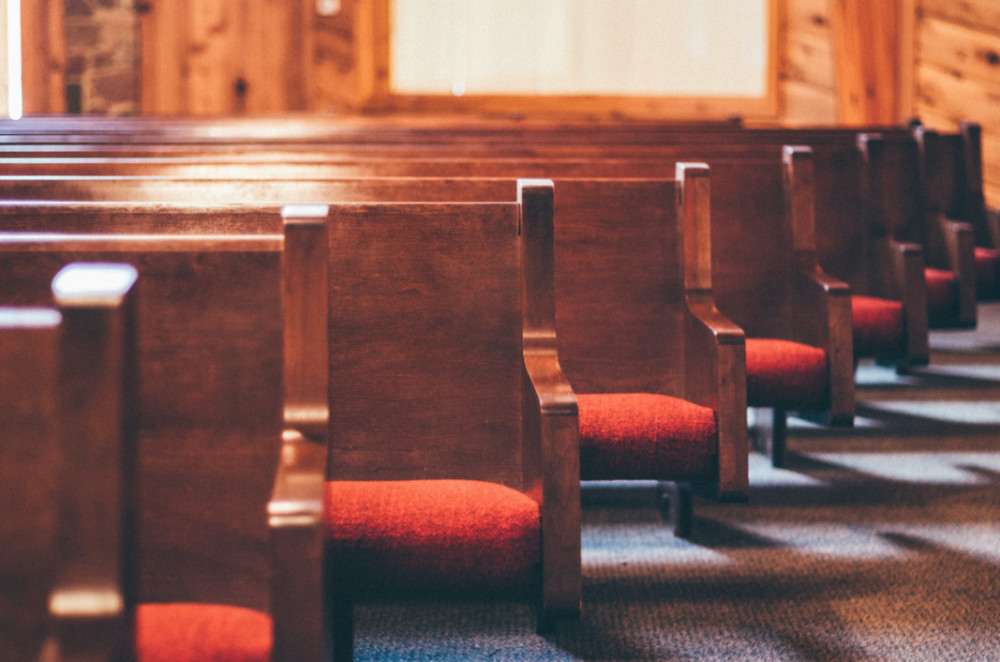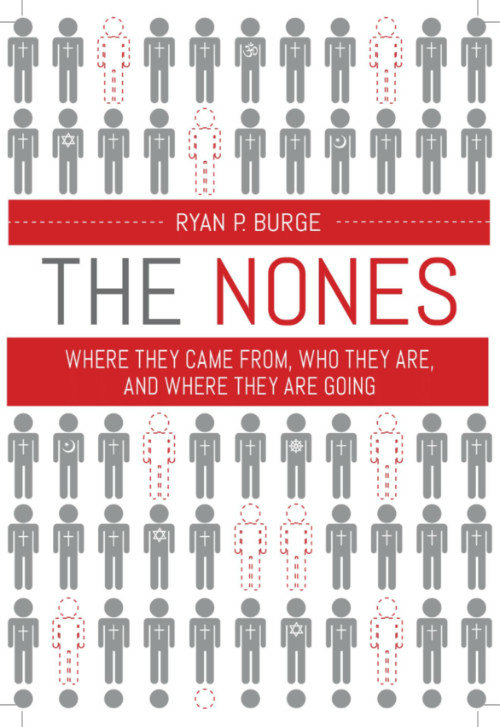
In an article first published on Religion News Service, RYAN BURGE – pastor, demographer and author of new book The Nones, looks at the growing impact of American society’s secularisation on the church…
Via RNS
I became the senior pastor of First Baptist Church of Mount Vernon, Illinois, in 2006, at the tender age of 23, with less than a year of experience in the pulpit. First Baptist had once been one of the largest and most influential churches in the community. In 1968, we had more than 300 members and had recently dedicated a brand-new facility on the edge of town.
By the late 1990s, there were about 100 in the pews on a good Sunday. When I took over the pastorate, we’d see about 50 souls for a typical service. Nearly 15 years later, we’ve had attendance in the single digits on more than one occasion.

PICTURE: Andrew Seaman/Unsplash/Creative Commons
What’s happening to my church is occurring in hundreds of churches across the United States. Large numbers of adults have left organised religion behind, and in their wake churches are faced with difficult questions. How long they can endure? Should they continue to exist as the expenses of maintaining large buildings mount and the membership declines?
While pastoring my small American Baptist church in rural Illinois, I completed a doctorate in political science and began publishing papers on trends in American religion and politics over the last five decades. One of my primary focuses is religious demography, which is the change in size and composition of faith traditions over time – the data behind what had happened to my church.

“With due respect to the evangelical Christians who have swayed Republican politics over the past 40 years, there’s no bigger story in American religion than the persistent and unceasing rise of the “nones” (people who do not identify with any religious tradition).”
With due respect to the evangelical Christians who have swayed Republican politics over the past 40 years, there’s no bigger story in American religion than the persistent and unceasing rise of the “nones” (people who do not identify with any religious tradition).
In 1972, just about one in 20 Americans said that they were associated with no religion when asked by a pollster. That figure climbed just two percentage points in the next 20 years. From that point forward, however, the nones enjoyed what venture capitalists like to call “hockey stick” growth.
In 1996, about 12 per cent of Americans were nones. By 2006, it was 16 per cent. In the latest data, collected in 2018, nearly 24 per cent of Americans had no religious affiliation – an increase of 50 per cent in just 12 years.
I don’t need to show that graph to many of my ordained friends who stand before smaller and smaller congregations each Sunday in rural America. It’s happening right before their eyes.
Just a few years ago, my congregation of retirees and widows decided it didn’t make sense anymore to worship in a sanctuary that was built to accommodate 300 people. We now meet in a large classroom that fits about 30 chairs. For nearly two years we tried to sell our building, but we eventually gave it away in trade for a promise that we could worship there as long as we are physically able.
As I write in my new book, The Nones: Where They Came From, Who They Are, and Where They Are Going, the most likely reason for the dramatic rise in the religiously unaffiliated is simple secularisation – the theory that as nations become more educationally advanced and economically prosperous, they will become less religious.
Of course, there have always been educated and prosperous Americans, but as that class grew, the growing tide of secularisation was likely hidden by the patina of generic Christianity in the United States. President Dwight Eisenhower famously stated in 1952, “Our form of government has no sense unless it is founded in a deeply felt religious faith, and I don’t care what it is”. Civic religion just bought us time, however.
Many pastors, discussing the rise of the nones, talk as if secularisation is an easily solved problem: Filling the pews back up is a matter of a few outreach programs or a better children’s ministry. In reality, turning the tide on secularisation with more of the same is as effective as tamping down a forest fire with a garden hose.
In many ways, secularisation is like globalisation. Both began to slowly transform the American way of life and before most of us were aware had built up so much momentum that they became impossible to stop. It’s foolhardy to think that the emptying of churches that was occurring all over Europe would not find its way to American shores.
For decades, politicians have tried to stem the tide of globalisation by enacting tariffs on imported goods and providing incentives to keep workers in the United States. All it’s done is temporarily delay the jobs from moving offshore.
Churches have similarly tried to keep more people on the membership rolls by installing state-of-the-art sound systems and lights shows. They invested millions into custom graphics, branding strategies and streaming technology. Yet the nones continue to increase in size and influence every year.
The skyrocketing rates of disaffiliation are not entirely inevitable. White American churches have alienated some with their increasing linkage with the Republican Party. For instance, 40 per cent of people who identify as “very liberal” today count themselves as a none; just 10 per cent of “very conservative” people do.
Some pastors have managed to retain or reduce their potential audience by being expressly partisan from both the pulpit as well as their social media accounts. When Michael Jordan was asked by a reporter why he wasn’t more political, he famously answered, “Because Republicans buy shoes, too”. Pastors would do well to heed Jordan’s advice.
“Jesus tells a story about a farmer in the Gospel of Matthew who throws seed on all kinds of ground. Most of it falls on inhospitable soil and never grows to its full potential. Some seeds, however, find fertile ground and grow to an abundant harvest. Secularisation has left a soil that is rocky and shallow – but many churches continue to throw seeds. If Christianity maintains its place in American society in the future, it will depend not on those throwing the seeds, but on the hospitality of the soil. “
But it should be some comfort to pastors that what has occurred in American religion over the last 30 years is largely outside their control. The rightward political drift probably only had a marginal effect on the American religious landscape. There are larger forces at play – and no matter how well they preach, how many gymnasiums they build or how many outreach programs they orchestrate, the nones will continue to grow.
Jesus tells a story about a farmer in the Gospel of Matthew who throws seed on all kinds of ground. Most of it falls on inhospitable soil and never grows to its full potential. Some seeds, however, find fertile ground and grow to an abundant harvest.
Secularisation has left a soil that is rocky and shallow – but many churches continue to throw seeds. If Christianity maintains its place in American society in the future, it will depend not on those throwing the seeds, but on the hospitality of the soil.
Ryan Burge is an assistant professor of political science at Eastern Illinois University, a pastor in the American Baptist Church and the author of The Nones: Where They Came From, Who They Are, and Where They Are Going





